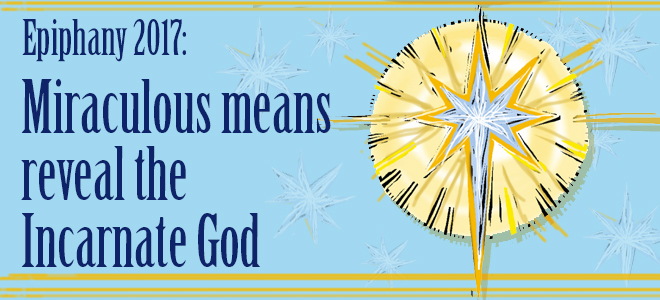
In a series of ten fictional books starting with Joshua (1983), author and retired Roman Catholic priest Joseph F. Girzone imagined Jesus Christ’s returning to earth and living as a carpenter in at least one small town, where He transformed people’s lives with random acts of kindness. Although the premise of the book goes against what the Bible teaches of Jesus’s final return in glory, among other things, it touches on the question about how one might have recognized Jesus as the Son of God in human flesh when He was first on the earth and living as at least the legal Son of a carpenter. Since there was nothing about His normal appearance to attract us to Him (Isaiah 53:2), Divine revelation and His words and deeds were the only way for people to know then, even as they are the only way for us to know now. Indeed, as we hear in the season of Epiphany (which means a “showing forth” or “revealing”), Divine revelation and Jesus’s own words and miraculous deeds revealed Him as God in human flesh then and reveal Him as God in human flesh now. For us, Divine revelation in Holy Scripture tells of the past words and deeds, and Scripture with visible means—water in Holy Baptism, the pastor’s words and actions in Holy Absolution, and bread and wine in the Sacrament of the Altar—are His means of working miraculous deeds in our time, such as bringing us to repent and believe that His death on the cross saves us from our sins.
God’s Word in the Old Testament and a miraculous star revealed the perhaps two-year-old child Jesus as King of the Jews to wise men from the east (Matthew 2:1-12). Their experience is recalled and applied to us on the day of Epiphany, January 6th. Pilgrim offers a special Divine Service at 7:00 p.m. that Friday night this year.
A miraculous appearance of the Holy Spirit as a dove and God the Father’s voice from heaven revealed Jesus to be the Son of God in human flesh at His baptism (Matthew 3:13-17). That event is recalled and applied to us on the First Sunday after Epiphany (January 8th, this year), when Pilgrim will have a Divine Service at 10:45 a.m., as it does nearly every Sunday.
The Epiphany season begins with those two days and ends with the Transfiguration of Our Lord, all using paraments that are white, a color appropriate for baptism and the light and purity of our Lord. But, the Sundays in between use paraments that are green, the color of growth, leaves, fruit, and life, suggesting spiritual growth. Such spiritual growth comes about by the pure preaching of the Gospel and right administration of the Sacraments. As God wills, such spiritual growth also can be accompanied by numerical growth, as He creates faith when and where He pleases in those who hear the Gospel.
The following are the “green” Sundays in Epiphany 2017 and their Gospel Readings (appointed by Lutheran Service Book’s three-year lectionary series A, which largely uses the Holy Gospel according to St. Matthew).
- Second Sunday (1/15): Jesus is identified as the Lamb of God (John 1:29-42a)
- Third Sunday (1/22): Jesus preaches and calls disciples (Matthew 4:12-25)
- Fourth Sunday (1/29): Jesus preaches about true blessings (Matthew 5:1-12)
- Fifth Sunday (2/05): Jesus preaches about the greatest righteousness (Matthew 5:13-20)
- Sixth Sunday (2/12): Jesus clarifies understanding about God’s law (Matthew 5:21-37)
- Seventh Sunday (2/19): Jesus preaches about true perfection (Matthew 5:38-48)
Perhaps the only time there really was something about Jesus’s appearance that showed Him to be God in human flesh was His Transfiguration (Matthew 17:1-9). In keeping with Lutheran practice dating back to the Reformation, the last Sunday in Epiphany is always The Transfiguration of our Lord (February 26th, this year).
You are always welcome at Pilgrim in person, but you are also welcome to read and hear the sermons at Pilgrim from the Season of Epiphany and from every season of the Church Year online here.
The banner graphic at the top of this page and the corresponding graphic in the slider were adapted by Carla Adsit, using an uncredited image of the star the magi followed that was found here.

